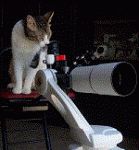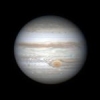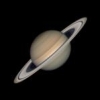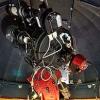Hello everyone.
So i have this doubt because i want to acquire a new eyepiece, specifically for observing the brighter DSOs such as globular clusters and nearby nebulae.
We know that small exit pupil found on medium power eyepieces benefits observing DSOs and galaxies since it may reveal details that wont show on low power eyepieces.
Also, we know that the shorter the focal lenght of the eyepiece, the dimmer the image gets.
So, normally, the best eyepiece for DSOs would be the one with an exit pupil of 1.5-2mm, right?
My question comes here: Does the same apply for small apertures?
Given that i have a F/10 small aperture scope and prominent light pollution that makes DSOs such as Andromeda Galaxy already too dim and hard to spot, which would give the best experience given that i need all the light i can get?
A 40mm eyepiece (cant afford any longer) would give me a 4mm exit pupil, and a 15mm one would give me 1.5mm exit pupil.
In between these 2, which one would help me resolve better these objects or which one is overall a better pick? Considering i already have a highpower eyepiece and a 26mm eyepiece that allows me to fit the pleiades perfectly in my FOV.
Many thanks!
The best exit pupil for a target depends on several key factors:
1. The apparent size of the magnified object against your retina (e.g. how big it appears to be to your eyes)
2. The contrast of the object with respect to light pollution levels
3. Similar to #2, how well defined the edges of the object are. Are they well defined like a planetary nebula, or do they fade off into nothing like an elliptical galaxy?
4. Whether the object is an extended/diffuse object like a nebulae or galaxy, or a star cluster
5. What you want to do with the object (observe details in it, or just say that you saw it, or attempt to observe color in it)
6. Whether you want to use high quality, narrow bandwidth line filters (O-III, H-Beta etc).
Some objects look great at very high magnification in exit pupils as small as 0.3mm. Some objects require the most field of view you can give them (exit pupil becomes irrelevant here). Some objects never show detail at any magnification. Some objects are so diffuse that higher power makes it harder to distinguish where the edges are. Some objects look good at a mix of different magnifications/exit pupils.
If you want a good "general purpose" DSO eyepiece, then I think anything from 15mm to 18mm is a good fit. If you want to use a line filter like an O-III or H-Beta, then a 32mm or 40mm is a good choice.
A smaller exit pupil (0.75mm to 1mm) on globular clusters like M13 and M3 would be beneficial. It will darken light pollution and help resolve more stars. Though this exit pupil might not be great for detecting really small NGC globs which will essentially look like nebulae in your telescope. For those smaller, fainter globs, you'd want to use a brighter exit pupil to detect them.
You might want to consider getting a simple 8-24mm zoom eyepiece. This will let you find an optimum magnification & exit pupil for a variety of objects. You'll find that some objects have a tendency to "pop" once you hit that sweet spot of magnification and exit pupil that your eye/brain prefers.
























